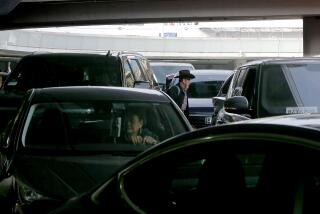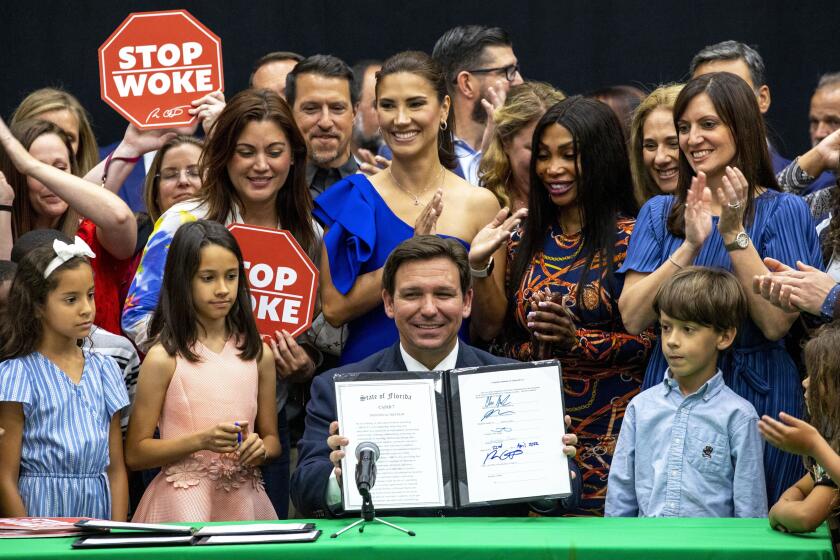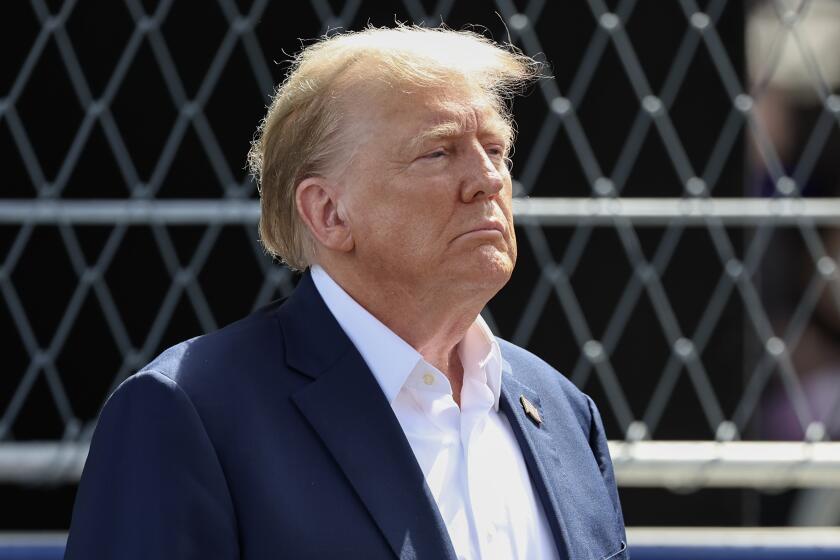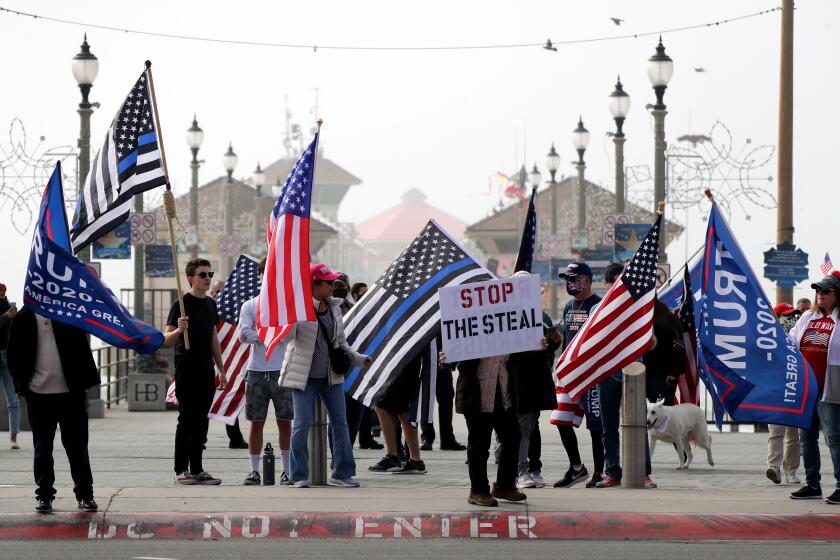Expo Line to fill an L.A. gap
Here’s what you need to know about the new Expo Line, the latest addition to L.A.’s patchy network of light-rail spurs: It’s fast — for about three miles, then it gets pretty slow. It’s so brand spanking new that the slimy stuff you feel on the stainless steel handrails is actually oil, not something more infectious left behind by passengers with bad colds. It’s quiet as an elevator. And it’s opening April 28.
Here’s what it isn’t: The first rail line since the closing of the old Red Car network to connect the Westside to the rest of L.A., as Mayor Antonio Villaraigosa and other leaders of L.A.’s transportation scene said repeatedly Friday during a media test ride. If all goes according to plan, that will come true sometime in 2016, when Phase 2 of the line, running from its current terminus at Venice and National boulevards in Culver City to Colorado Avenue and 4th Street in Santa Monica, is completed. But most people would consider Culver City a tad south and east of the Westside.
Geographic quibbling, of course, matters less than whether people will actually ride this $930-million train, and whether it will speed their trips. The answer: Yes, sort of. The Metropolitan Transportation Authority estimates that 27,000 people a day will ride Phase 1, rising to 64,000 when the full 15.2-mile line is completed. Supervisor Zev Yaroslavsky said that would make it the busiest light-rail line in L.A., and one of the busiest in the country.
It took 24 minutes to get from the second-to-last station at La Cienega and Jefferson boulevards (the final Phase 1 station won’t open until this summer) to the 7th Street/Metro Center station downtown. It won’t go that fast in the real world; it skipped some stations during the media preview, and a ride along the full 8.6-mile route will probably take closer to 30 minutes. The train goes 55 miles per hour between La Cienega and Arlington Avenue, where cross-streets are blocked off with safety gates, but after that there are no more gates so it must slow to 35. It’s still faster than driving surface streets because the traffic lights are timed to stay green when the train approaches.
Yes, you could drive that far on the parallel Santa Monica Freeway in less than half the time it takes on the Expo Line, assuming there was no traffic. You could also flap your arms and fly to the moon, assuming your arms were equipped with retro rockets. The 10 is one of the busiest freeways in the United States, and it’s only going to get worse. The train goes to USC, Staples Center and Exposition Park, and it connects to rail lines running to Long Beach, Pasadena or North Hollywood. Its completion makes L.A.’s rail network start to feel almost, well, functional.
— Dan Turner
More to Read
A cure for the common opinion
Get thought-provoking perspectives with our weekly newsletter.
You may occasionally receive promotional content from the Los Angeles Times.






